14 Rhythm Basics
Sound in music not only has a pitch (note) but also has duration, meaning how long the pitch is heard or played. The combination of durations found in music is called rhythm. This duration or rhythm can be determined by the colour, stem, and beam or flags on a note. There are numerous types of note durations; we will examine some of the most common note durations.
Note Durations
| Whole note | 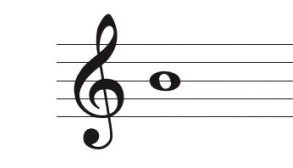 |
A whole note, the largest type of note, can be identified by the lack of stem or colouring in the centre of the note itself. |
| Half note | 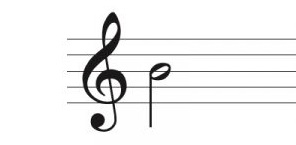 |
Half notes differ in appearance from whole notes in that they have a stem but are still empty in the centre of the note itself. |
| Quarter note | 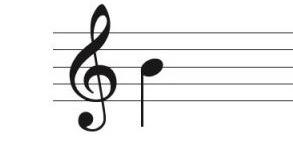 |
Quarter notes have a stem but are fully coloured in. |
| Eighth note | 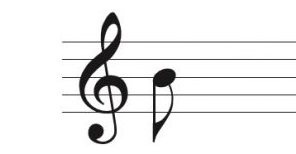 |
Eighth notes (8th) are the longest notes with a flag. They still have a stem and are coloured in quarter notes, but they have a flag when they aren’t paired with another eighth (or smaller) note. |
| Beamed Eighth note | 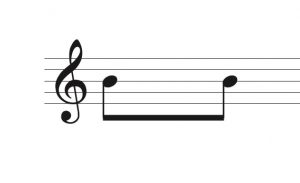 |
When paired together, eighth notes are beamed rather than flagged. The black line connecting the two notes together is the beam. |
| Sixteenth note | 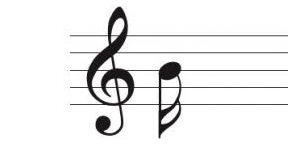 |
Sixteenth notes are the shortest note we will study, with two flags. They can also be connected like eighth notes but with two beams. |
Rests
Similar to notes, music uses symbols called rests to indicate lengths of silence.
| Whole rest |
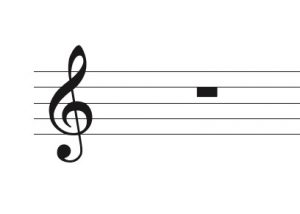 |
A whole rest is the same length as a whole note but of silence. It appears as a black rectangle that hangs from the 4th line of the staff. |
| Half rest |
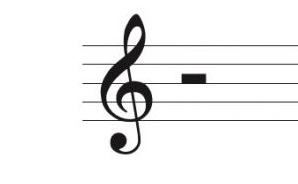 |
The half rest is the same length as a half note but of silence. It is a black rectangle that sits on the 3rd line of the staff. |
| Quarter rest |
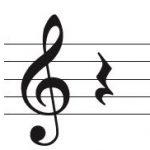 |
The quarter rest replaces a quarter note length with silence. It’s a squiggly line, sometimes appearing as a backward 3 with a line on top. |
| Eighth rest |
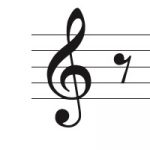 |
The eighth rest is the same duration as an 8th note. It resembles a 7 with heavy dot on the left-hand side of it. |
| Sixteenth rest |
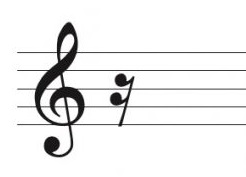 |
The sixteenth rest resembles the eighth rest, but it is similar to the eighth and sixteenth notes, has an extra scoop on it – similar to the extra beam or flag on the notes. |

